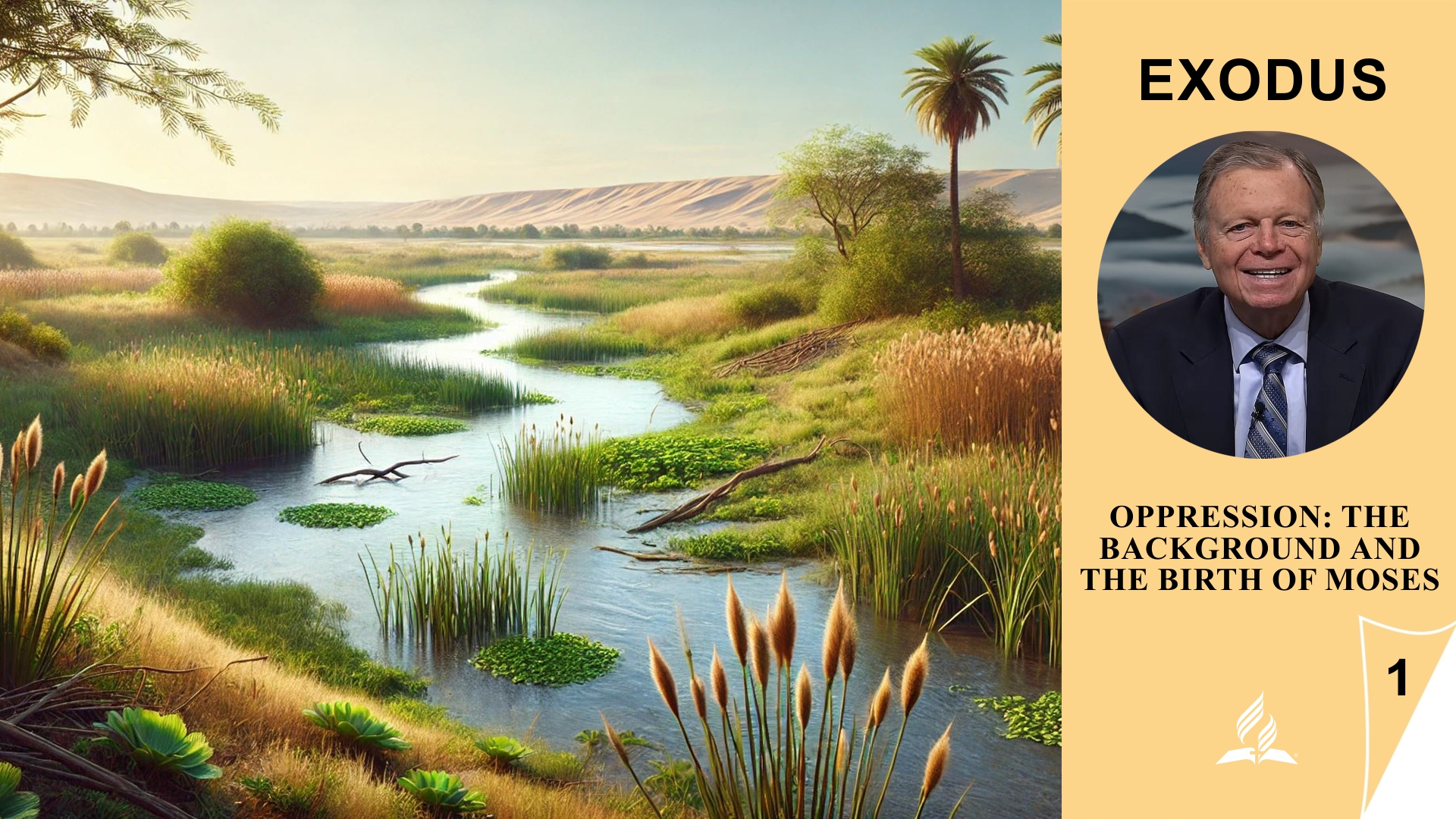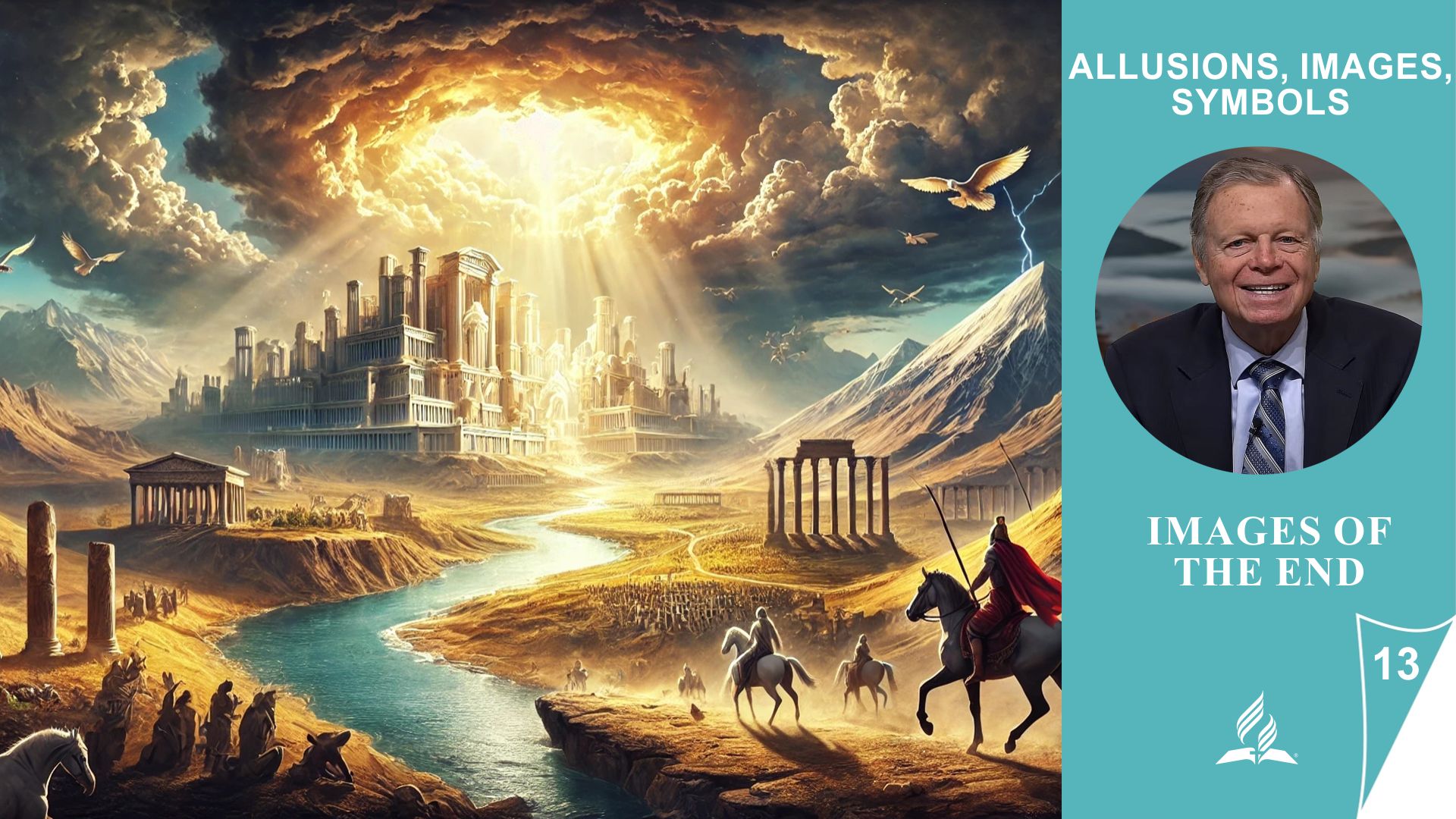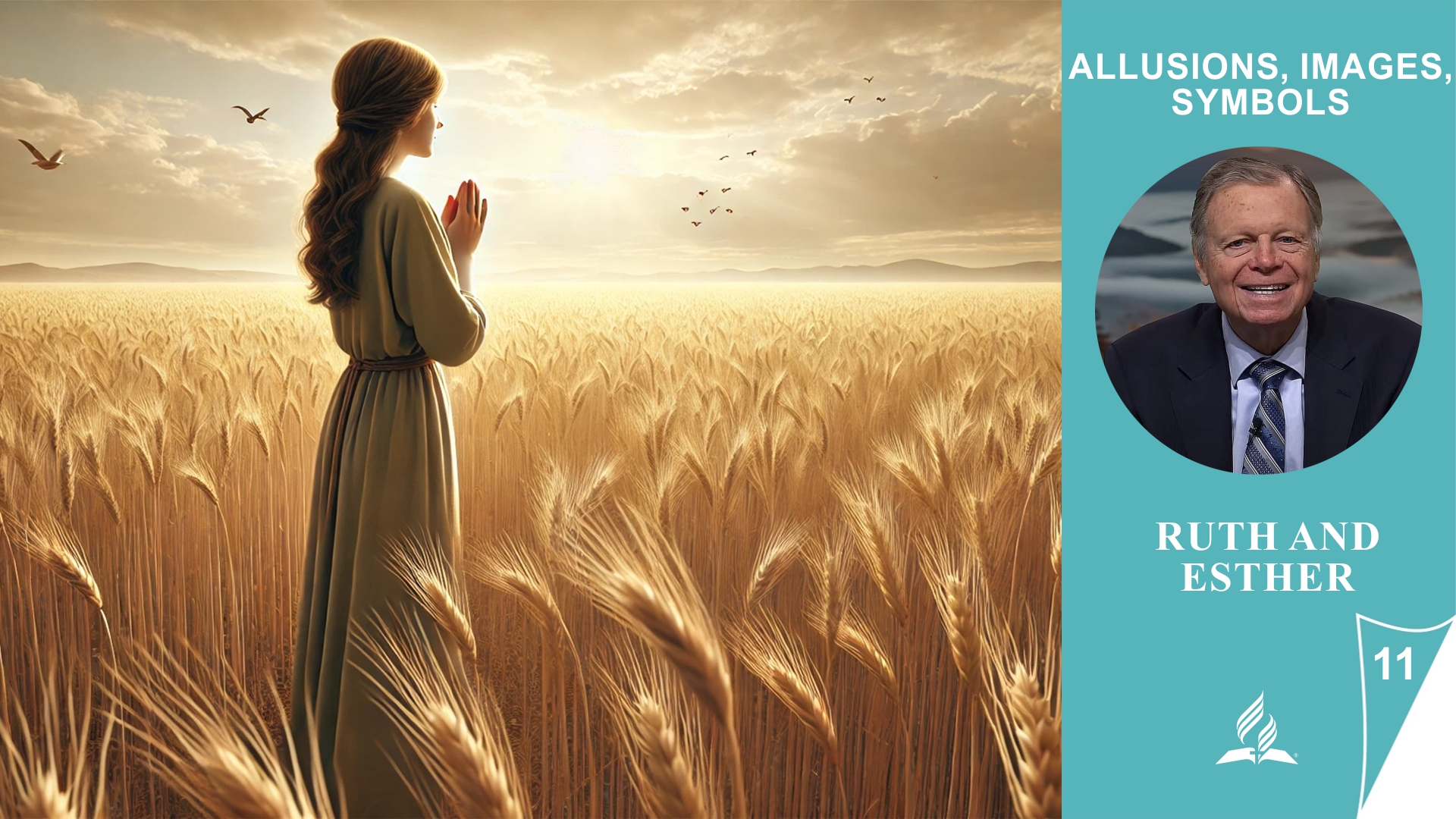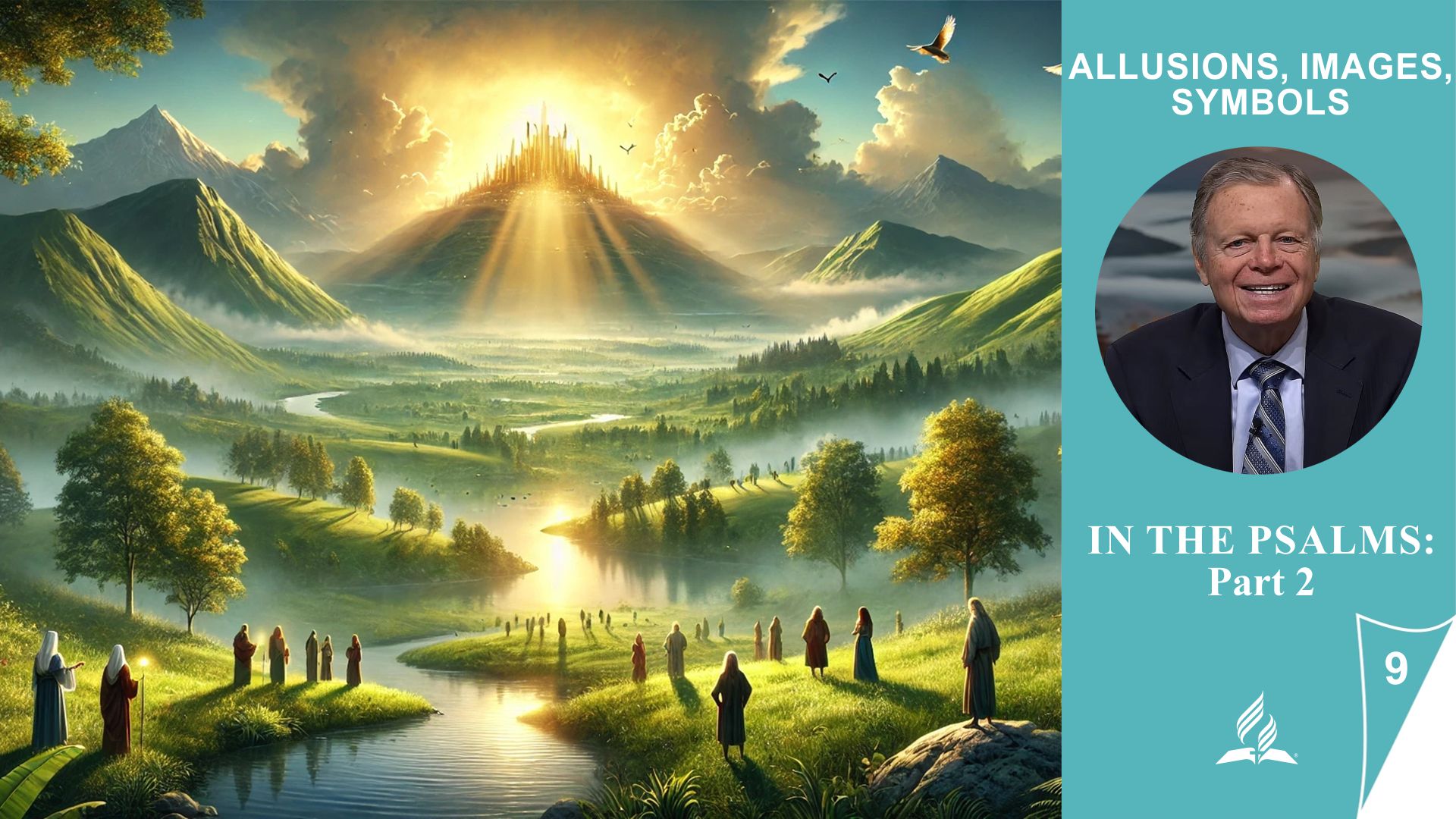
Allusions, Images, Symbols – Lesson 13.Images of the End | Sabbath School with Pastor Mark Finley

Series ALLUSIONS, IMAGES, SYMBOLS with Pastor Mark Finley
Lesson 13.Images of the End
Prophetic Images – Signposts for the End Times
Lesson 13 takes us on a symbolic journey through biblical stories that are far more than historical records – they carry prophetic meaning for the end times. Characters such as Jonah, Belshazzar, and Cyrus, as well as events like the fall of Babylon, serve as foreshadowings of what is yet to come. In these stories, God reveals not only judgment but also His grace and willingness to save. These images are meant to awaken us, encourage us, and call us to make a decision for Christ. In a world full of spiritual confusion, it is essential to pay attention to God’s Word and interpret the signs of the times correctly. Those who learn from the past are prepared for what lies ahead.
Content:
13.1 The Reluctant Prophet
Jonah – A Reflection of God’s End-Time Messengers
Jonah was a reluctant prophet – and in that, he reflects many Christians today. His story shows how God patiently and purposefully shapes His messengers, even when they hesitate or run away. Jesus Himself referred to Jonah as a sign pointing to His own death and resurrection, giving the gospel its deepest meaning. Especially noteworthy is Jonah’s confession of the Creator God – a theme echoed in the first angel’s message in Revelation. Like Jonah, we are called today to proclaim a message of repentance – often against resistance. Yet God’s mission remains: Call people to turn back, even when it’s uncomfortable.
13.2 A Work of Repentance
Repentance Changes the Outcome – Even in the End Times
Jonah’s message was clear and uncompromising: Nineveh faced judgment. But the people’s response – sincere repentance and turning from evil – completely changed the outcome. This shows that God’s judgment is not arbitrary, but responsive to human decisions. In the end times as well, there will be people who heed God’s call and are spared. However, not all prophecies are conditional – some, like Christ’s return or the plagues, will be fulfilled without exception. The decisions we make today reveal whether we will be ready when the final events unfold.
13.3 Belshazzar’s Feast
Belshazzar – Knowledge Alone Does Not Prevent the Fall if the Heart Remains Proud
Belshazzar’s feast was more than a decadent act – it was a deliberate provocation against the God of heaven. Despite knowing his grandfather Nebuchadnezzar’s story and spiritual transformation, Belshazzar ignored the warnings. His greatest guilt was not ignorance, but willful contempt. He knew better – yet he did not humble himself. In the end times, it will be similar: Many will recognize the truth, but it is the heart that determines whether they turn to God or reject Him. Spiritual insight must be coupled with a humble heart – otherwise, it leads not to salvation, but to judgment.
13.4 The Drying of the Euphrates
When the River Runs Dry – The Fall of Babylon Is Near
The fall of ancient Babylon was both sudden and symbolic: the Euphrates, once a source of security, became a pathway for enemy invasion. Revelation 16 picks up this image prophetically – the “drying up of the Euphrates” signals the fall of end-time Babylon. The parallels are striking: indifference, celebration, and spiritual blindness once led – and will again lead – to sudden judgment. Yet even within these grim scenes shines a promise: “Behold, I come as a thief… Blessed is the one who stays awake.” (Rev. 16:15) Those who remain spiritually alert and clothed in Christ’s righteousness will not be caught off guard. The choice lies with each of us – now.
13.5 Cyrus, the Anointed
Cyrus – A Pagan King as a Foreshadowing of the Redeemer
Cyrus was not an Israelite, yet God used him to free His people – a powerful reminder of God’s sovereignty over history. As the “anointed one” (Isa. 45:1), Cyrus prophetically prefigures Christ, who will also defeat Babylon and ultimately liberate His people. Cyrus’s decree not only initiated the rebuilding of the temple but also helped shape salvation history leading to the birth of Jesus. Like with Cyrus, we see that God often uses unexpected people to fulfill His promises. This strengthens our confidence that the final prophetic scenes will certainly unfold. Cyrus’s story reminds us: God is in control – even when His ways seem hidden.
13.6 Summary
Warning, Grace, and Hope – Lessons from the Past for the End Time
Lesson 13 uses vivid Old Testament imagery to show how seriously God takes His warnings – and how great His grace is. Jonah, Belshazzar, Babylon, and Cyrus symbolically represent spiritual realities of the end times. While God stirred Nineveh to repentance, Belshazzar’s pride led to judgment. The drying up of the Euphrates points prophetically to the fall of modern Babylon, while Cyrus foreshadows Christ as the ultimate liberator. This lesson emphasizes that our decisions today determine on which side we will stand when the final events take place. God’s call to repentance is still open – and His promise of deliverance remains sure.
Allusions, Images, Symbols – Lesson 11.Ruth and Esther | Sabbath School with Pastor Mark Finley

Series ALLUSIONS, IMAGES, SYMBOLS with Pastor Mark Finley
Lesson 11. Ruth and Esther
Divine Providence and the Story of Redemption in the Great Controversy
Lesson 11 invites us to discover the deep connections between the accounts of Ruth and Esther and the great spiritual conflict. In both stories, God’s care meets us in the midst of hardship—whether through Boaz’s saving hand or Esther’s courageous intervention at the royal court. At the same time, the claims of Satan and the dark context in which God protects and delivers His people are revealed. The typology of Boaz as a foreshadowing of Christ and the parallels to biblical prophecy point to God’s comprehensive plan to overcome rebellion and suffering. Thus, this lesson encourages us to recognize God’s sovereign guidance in both small and large matters and to fix our hope firmly on His ultimate intervention.
Content:
11.1 Famine in “The House of Bread”
God’s Caring Presence amid Human Need
The account of the famine in Bethlehem vividly shows how the consequences of human rebellion alienate us from God’s original blessing. Although the earth still yields abundance, our greed and selfishness lead to scarcity and suffering. Yet even in this apparent emptiness, God’s unfailing faithfulness is revealed: He remains present and acts in history without violating our free will. Naomi’s and Ruth’s plight reminds us that we share responsibility for our situation, but that does not stop Him from offering rescue and hope. The story encourages us to trust that God will one day finally overcome sin and suffering.
11.2 Ruth and Boaz
The Redeeming Kinsman as a Type of Christ
In the encounter between Ruth and Boaz, God’s provident care is revealed in a unique way. Boaz’s kindness takes on even greater significance when Naomi realizes he is also the kinsman-redeemer who can secure her inheritance. This makes clear that our spiritual poverty need not be the end of the story, for God’s salvation comes through one who fully understands our plight. In Boaz, we see a picture of Christ, who not only acts generously but also unites Himself with our condition. His incarnation and sacrifice show that God takes us as His bride despite our brokenness. This truth invites us to derive our identity not from our own efforts but from His redeeming love.
11.3 Boaz as Redeemer
The True Heir: Christ’s Victory over Satan’s Claim
The account of Boaz’s intervention at the city gate demonstrates that love and justice go hand in hand: Boaz is prepared to stand for Ruth and secure her claim. Yet a “closer kinsman” symbolizes Satan’s claim on humanity, asserted through guilt and sin. Just as Boaz bypasses the nearer relative to redeem Ruth, so Christ overcomes Satan’s claim on us by His vicarious sacrifice. The sandal exchange at the gate underscores that ownership and legal right are only truly transferred through payment of the price—Christ’s blood. This image invites us to place our trust not in our own works but in the only One worthy to redeem us.
11.4 Haman and Satan
The Power-Hungry One and His Eternal Adversary
Haman embodies Satan’s pride and obsession with power by elevating himself above all other princes and demanding their homage. Like Lucifer, he rejects any subordination to God’s sovereignty and directs his wrath at those who remain faithful. The parallel in Revelation shows that Satan’s strategy is the same from then until the end: he offers wealth and security but demands total devotion. Yet the faithful—whether in Esther’s story or in John’s vision—resist his demands and thereby affirm God’s ultimate rule. Their steadfastness demonstrates that true loyalty springs not from coerced worship but from unshakable trust in the Redeemer. Finally, this narrative teaches us that those who hold fast in the little things will be victorious in the ultimate test.
11.5 For Such a Time as This
Hope for the Final Act in the Great Controversy
Studying prophecy must not lead us into fear and despair but should keep before us the red thread of divine promise until the end. Though severe trials lie ahead, the story of Esther and the vision in Revelation 12 remind us that God never abandons His bride. Just as Esther was chosen “for such a time as this” to rescue her people, so we are not without divine assistance in the end times. The King Himself advocates for us, and the promise of deliverance is as certain as the announcement of tribulation. Those who read prophecy through to its liberating conclusion maintain their trust in God’s final victory. Therefore, it is worthwhile to keep the big picture in view so that hope is not lost in the details.
11.6 Summary
God’s Saving Hand in the Great Controversy
The stories of Ruth and Esther show how God’s love and care remain effective even in times of need and oppression. In Ruth, God’s promise is revealed through Boaz, the redeemer who rescues the childless family and thus points to Christ as the true Redeemer. The parallels to Satan’s claim—seen in Job’s trial, the dispute over Moses, and the temptation of Christ—make clear that the enemy seeks a “closer kinsman” to claim us. In Esther, we see how God protects His people through seemingly coincidental turns of events and courageous intermediaries. Both narratives encourage us to trust in God’s sovereign salvation in both small and great matters. They invite us to embrace the biblical story of redemption in all its scope, both as a challenge and a comfort until the very end.
Allusions, Images, Symbols – Lesson 10.Upon Whom the Ends Have Come | Sabbath School with Pastor Mark Finley

Series ALLUSIONS, IMAGES, SYMBOLS with Pastor Mark Finley
Lesson 10.Upon Whom the Ends Have Come
Ready for the Final Hour – God Judges and Saves
Lesson 10 takes us on a journey through central end-time scenarios of the Bible, beginning with the wrath of the Lamb and ending with the pre-advent judgment. We meet Noah, who built unwaveringly on God’s word, and Abraham, who deepened the understanding of divine justice in conversation with God. The tragic examples of Sodom and Gomorrah warn us of the consequences of unrepented sin, while Daniel 7 reveals the final divine judgment under the Son of Man, Jesus. Throughout these accounts runs the golden thread of God’s sovereignty, grace, and transparency in the plan of salvation. This lesson encourages us to remain watchful, examine our hearts, and tirelessly proclaim the gospel until the final hour.
Content:
10.1 The Wrath of the Lamb
When the Lamb is Angry – The Final Hour of Grace
In Revelation 6:12–17, we see heaven and earth trembling, and humanity frightened before the wrath of the Lamb—even though they know His story. Interestingly, the lost do not complain about a lack of information, but about their hopeless condition: they acknowledge the judgment, yet don’t know how to escape. Their cry, “Who can stand?” reveals that knowledge alone does not save, but obedience and faith. Noah’s time already shows in Matthew 24:36–44 that warnings and commandments do not prevent many from being caught unprepared. The increasing attitude of mockery (2 Peter 3:3–4) stretches the apparent delay—until the hour of decision strikes each individual. This awareness should prompt us to remain alert and continue proclaiming the gospel until “the day” truly comes.
10.2 Noah’s Evangelism
Steadfast in the Call to Salvation
Noah’s century-long building of the ark shows us that obedience precedes understanding: he acted on God’s word, even when no visible results were seen. Many still dismiss the flood as a myth today, even though it is clearly attested in Scripture and tradition. Just as in Noah’s time, the moral atmosphere was filled with lawlessness and rejection of divine guidance (Genesis 6:1–8). This teaches us that our proclamation of the “Three Angels’ Messages” must not depend on numerical success but on faithful witness. Jesus Himself reminds us in John 4:37 that sowing and reaping have their seasons—we sow, even if we do not yet see the growth. Thus, we remain in service, knowing that God will complete His “work of grace” when the time is fulfilled.
10.3 The Story of Sodom and Gomorrah
When the Fire of Judgment Falls – Lessons from Sodom and Gomorrah
The destruction of Sodom and Gomorrah shows how deep wickedness and spiritual adultery can bring an entire people to ruin (Ezekiel 16:46–50). Peter and Jude directly connect this Old Testament judgment with the end times to warn us that we too will be judged by fire if we persist in sin (2 Peter 2:4–11; Jude 5–8). Shockingly, Israel in its spiritual arrogance acted worse than those cities—a sharp image of how complacency blinds us (Ezekiel 16:47). Paul adds that the worst transgressions arise precisely when we consider ourselves morally superior (Romans 1:18–32). Like David, who only recognized his own guilt through Nathan’s parable, the story of Sodom and Gomorrah calls us to honestly examine our own hearts before judging others. In this way, God’s Word protects us from self-deception and leads us to repentance.
10.4 The Judge of All the Earth
The Righteous Judge Grants Insight Before the Final Judgment
In Genesis 18:17–32, God reveals Himself as the one who discloses His judicial process and grants Abraham’s intercession before destroying Sodom and Gomorrah. This conversation reveals His nature: He judges with justice, not arbitrarily, and listens to the pleas of the righteous. By inviting Abraham to explore the threshold of righteousness—“Shall not the Judge of all the earth do right?”—God shows His willingness to be examined by His creation. The same openness is reflected in the millennium (Revelation 20), when the heavenly books are reviewed. It becomes clear: God’s character combines perfect holiness with patient transparency, even in the face of final judgment.
10.5 The Pre-Advent Judgment
Before the Throne of the Son of Man – God’s Redemptive Judgment
In Daniel 7:9–10,13–14,22,26–27, we witness the pre-advent judgment, where “the Son of Man,” Jesus, comes before the throne and proclaims that justice is given to the saints of the Most High. The main focus of this heavenly court is not revenge but the final affirmation and vindication of those who are in covenant with Christ. The books are opened so that both angels and humans may review the entire plan of redemption. In the end, the verdict declares that the eternal kingdom belongs to the Son and His saints—evidence that God’s grace and justice are united in Him. Therefore, our only hope in this judgment is not our own merit but the perfect righteousness of the One who atoned for us.
10.6 Summary
When the Final Hour Strikes – Insights for the End Times
Lesson 10 takes us through key accounts—from the warnings of the Lamb’s judgment to Noah’s patient preaching and the destruction of Sodom and Gomorrah—to reveal God’s character as both righteous Judge and merciful Redeemer. We see how God’s wrath and mercy go hand in hand: He warns His people, tests their willingness to repent, and grants deep insight into His decision-making. The image of the pre-advent judgment in Daniel 7 presents Jesus as the substitute advocate and judge, whose perfect righteousness saves His people. Each biblical story reminds us that information alone is not enough—we must allow our hearts to be transformed. Thus, Lesson 10 reminds us that the gospel must be proclaimed until the very end, and our only security when the final hour comes lies in the grace of Christ.
Allusions, Images, Symbols – Lesson 9.In the Psalms: Part 2 | Sabbath School with Pastor Mark Finley

Series ALLUSIONS, IMAGES, SYMBOLS with Pastor Mark Finley |
Lesson 9. In the Psalms: Part 2 |
Divine Promises and End-Time Perspectives in the Psalms |
In Lesson 9 we dive into the rich world of the Psalms and discover how these ancient songs of praise reflect the central themes of end-time prophecy. We begin with Psalm 46, which assures us of God’s unshakeable help amid chaos, and follow its call to faithfulness and rest in the face of judgmental upheaval. Psalm 47 and Zechariah 14 show us that as Christians we will not only be saved but will reign as co-regents in Christ’s kingdom. With Psalm 75 we learn of God’s justice that topples proud powers, while the blood of the new covenant in Matthew 26 and Revelation 14 brings the decisive turning point. Finally, Psalm 67 exhorts us not to keep God’s light to ourselves but to let it shine out to all nations. This lesson invites us to anchor our hope in God’s sovereign power and to take an active part in His end-time mission.
Content:
9.1 A Very Present Help in the Time of Trouble
God Our Rock and Refuge – Confidence in Crisis and the End Times
Psalm 46 presents us with an unshakeable Helper who is our refuge amid earthquakes, warfare, and global chaos. Even if “the earth gives way and the mountains fall into the heart of the sea” (Ps 46:3), we need not fear, for God Himself is our security. This promise applies not only to personal crises but also points to end-time visions in which heaven and earth are shaken (Rev 6:14; 2 Pet 3:12). In Christ on the cross—the true basis of our hope—we see the perfect revelation of God’s goodness, power, and faithfulness. When we “be still, and know that I am God” (Ps 46:11), we anchor our trust not in temporary turmoil but in the unshakeable promise of a new, eternal peace. Thus this psalm encourages us to stand firm and cling daily to Jesus’s victory over sin and death.
9.2 Hope Amid Turmoil
The Unmoved Throne over a Storm-Tossed World
Psalm 46 and Jeremiah 4 vividly depict a world in total collapse—physically and politically—to prepare the stage for God’s final renewal. Daniel 7 shows how successive, unstable kingdoms rise from the “turbulent sea” of nations, yet none can quell the chaos or solve humanity’s deepest problems. Our true citizenship lies in the kingdom of God, which sits high above all earthly upheaval (Phil 3:20; Ezek 1:26). Christ’s return will mark the moment when these broken powers finally fall, making way for a new heaven and a new earth (Rev 22:1). Until then, we remain steadfast in faith—not clutching foolishly at this world, but confident that God’s promises stand firm (Ps 46:7–8). This prophetic perspective fills us with hope: the last word belongs not to chaos, but to the King whose throne endures forever.
9.3 Under His Feet
Reigning with Christ over the Earth
Psalm 47:2–5 promises that God will make His people inherit the nations and place them under our feet—a picture of our reign in Christ’s kingdom. In 1 Thessalonians 4:13–17, we encounter Christ in the air as He raptures His bride for the heavenly wedding, while Zechariah 14:4 describes His feet standing on the Mount of Olives at the close of the millennial reign. These two passages reveal two interconnected aspects of Christ’s ultimate rule: our union with the exalted Lord in the rapture and our shared reign with Him at the end of the age. Satan once claimed dominion over the earth, but Christ—and with Him His saints—will ultimately hold rightful authority over all kingdoms. The vision of the New Jerusalem’s descent (VSL 607–608) gives us a living hope: we are not mere pilgrims, but future co-regents at Christ’s throne. Without these promises, life in the face of death would be empty and meaningless—but in Jesus we have a living pledge of eternal fellowship and reign.
9.4 Wine and Blood
From the Cup of Judgment to the Cup of the Covenant
Psalm 75 portrays God as the righteous Judge who shatters the “horns” of proud rulers and repays corrupt dominion with the cup of justice (Ps 75:8). In contrast, Matthew 26:26–29 presents the cup of wine as the symbol of the new covenant in Christ’s blood, uniting us with Him in righteousness. Revelation 14:9–12 warns that those who serve the beast must drink the “wine of God’s wrath,” while the saints, through faith and obedience, escape it and look forward to the eternal kingdom. Thus the narrative spans from the proclamation of judgment on self-exalting powers to Christ’s redeeming self-sacrifice. Until God completes His cosmic renewal, the destruction of the present order remains necessary to eradicate entrenched injustice forever. In this knowledge we live with hope—not in a world that judges itself, but in the promise of the cup that brings us eternal life.
9.5 That Your Salvation May Be Known
Radiant Ambassadors of Salvation in a Dark World
Psalm 67 calls us to receive God’s shining face and to make His ways known among all nations. In Revelation 14:6–12 the “three angels’ messages” continue this mission: proclaiming the eternal gospel, warning against false systems, and calling all to worship the Creator. If we coat our hearts with an ultrablack “nanocoating,” we absorb God’s light without reflecting it, failing to carry His salvation to the world. Instead of hiding in a “VIP lounge” of privilege, Christ has entrusted us with the whole earth as our mission field. Our task as church and individuals is not merely to bask silently in God’s glory, but actively to spread His light across the world and invite all to gather on God’s holy mountain.
9.6 Summary
Hope, Reign, and Mission in God’s Grand Design
In Lesson 9, “In the Psalms, Part 2,” key themes of biblical prophecy unfold: Psalm 46 assures us of God’s presence and victory even in the greatest chaos and final judgment. Psalm 47 and Zechariah 14 reveal that in Christ’s kingdom we will not only be saved but will reign as co-regents over the earth. Psalm 75 speaks of God’s righteous judgment on proud powers and contrasts the cup of wrath with the cup of the new covenant in Christ’s blood. Psalm 67 admonishes us not to keep God’s light to ourselves but to radiate His salvation to all peoples. Together, these passages summon us to active hope—grounded in God’s power and goodness—and to carry His promises forward until the new creation dawns.
- « Previous Page
- 1
- 2
- 3
- 4
- 5
- 6
- …
- 384
- Next Page »
